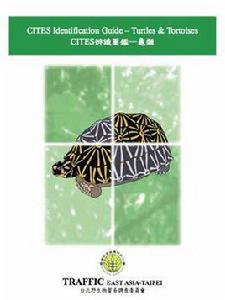內容介紹
The Convention on International Trade in Endangered Species of Wild Fauna and Flora (CITES), also known as the Washington Convention, has an impact on the lives of all Canadians and on the wildlife species with which we share our planet. Every time a new country signs CITES, the international effort to protect wildlife species is strengthened.
Becoming a signatory to CITES entails a number of obligations. Each party must designate an administrative body, scientific authorities and a fraud prevention unit, all of which are actively involved in the application of the Convention.
The many tasks involved in implementing CITES — issuing and verifying the necessary permits, inspecting goods, caring for live animals and ensuring proper storage of perishable derivatives — all require qualified, concerned personnel. Since none of the parties to CITES is in a position to allocate the human or financial resources required to ensure strict border control, each CITES administration must work with other organizations to achieve its objectives. These organizations have a variety of different mandates which support the requirements of the Convention and the legislation governing it.
These organizations often feel they are not properly qualified and that it is best to leave the application of CITES up to the experts. On the contrary, most people responsible for enforcing CITES, whether they be customs officers, police officers, conservation officers, or plant and animal product inspectors, are able to perform a number of essential tasks, such as identifying specimens and checking permits.
Environment Canada has developed a series of easy-to-use guides that do not require an advanced level of training. They are designed to help front-line staff effectively control transborder movements of controlled goods.
This guide on turtles was developed in cooperation with our colleagues in Mexico (PROFEPA). This pooling of efforts and resources has resulted in the production of a high-quality tool.
I hope that this guide will motivate you in your efforts to prevent illegal trade in wildlife species and will contribute to the protection of animals threatened by international trade.
作者介紹
The Convention on International Trade in Endangered Species of Wild Fauna and Flora (CITES) is an international agreement signed by more than 140 countries that regulates trade in a number of species of plants and animals, their parts and derivatives. The names of these species appear in a Control List that is updated every two years, following the meeting of the Parties to the Convention. The list provides the names of CITES species and indicates whether they are Appendix I, II or III species.
Appendix I species are rare or endangered. Trade in these species for primarily commercial purposes is prohibited. As a result, Appendix I species must be accompanied by a CITES export permit issued by the exporting country and a CITES import permit issued by the importing country.
Appendix II species are neither rare nor endangered at present, but could become so if trade is not regulated. The species in Appendix II must be accompanied by an appropriate CITES export permit issued by the exporting country before entry to the importing country will be allowed.
Appendix III species are not endangered but are subject to special management within the listing country (as indicated in parentheses beside the Appendix number). Species in Appendix III must be accompanied by an appropriate CITES export permit issued by the exporting country if the trade is with the listing country, or by a certificate of origin or a re-export certificate if the trade is with a country other than the listing country, as required by the Convention.
作品目錄
FORWARD ACKNOWLEDGEMENTS
HOW TO USE THIS GUIDE
Message to customs officers and other inspectors responsible for enforcing CITES
What is CITES?
What species are illustrated in the guide?
I must verify the identification of a turtle or a turtoise declared on a CITES permit: what do I do?
How to determine the validity of a CITES permit
I must identify a turtle or a tortoise that is not accompanied by a CITES permit: what do I do?
Example of the identification process
What is the purpose of the coloured tabs?
What is the purpose of the key pages?
What is the purpose of the descriptive pages?
What do the icons of parts and derivatives signify?
What does the family presentation bar describe?
What is the purpose of the orange section?
What is in Index A?
What is in Index B?
Symbols
Size
KEY PAGES Morphological characteristics used in the key
Identification key for whole specimens
Parts and derivatives
Identification key for plastrons
BLUE SECTION Easily recognizable species
YELLOW SECTION Species requiring closer observation
ORANGE SECTION
Species that should be referred to a specialist
Species not illustrated in the guide
INDEX A
INDEX B

